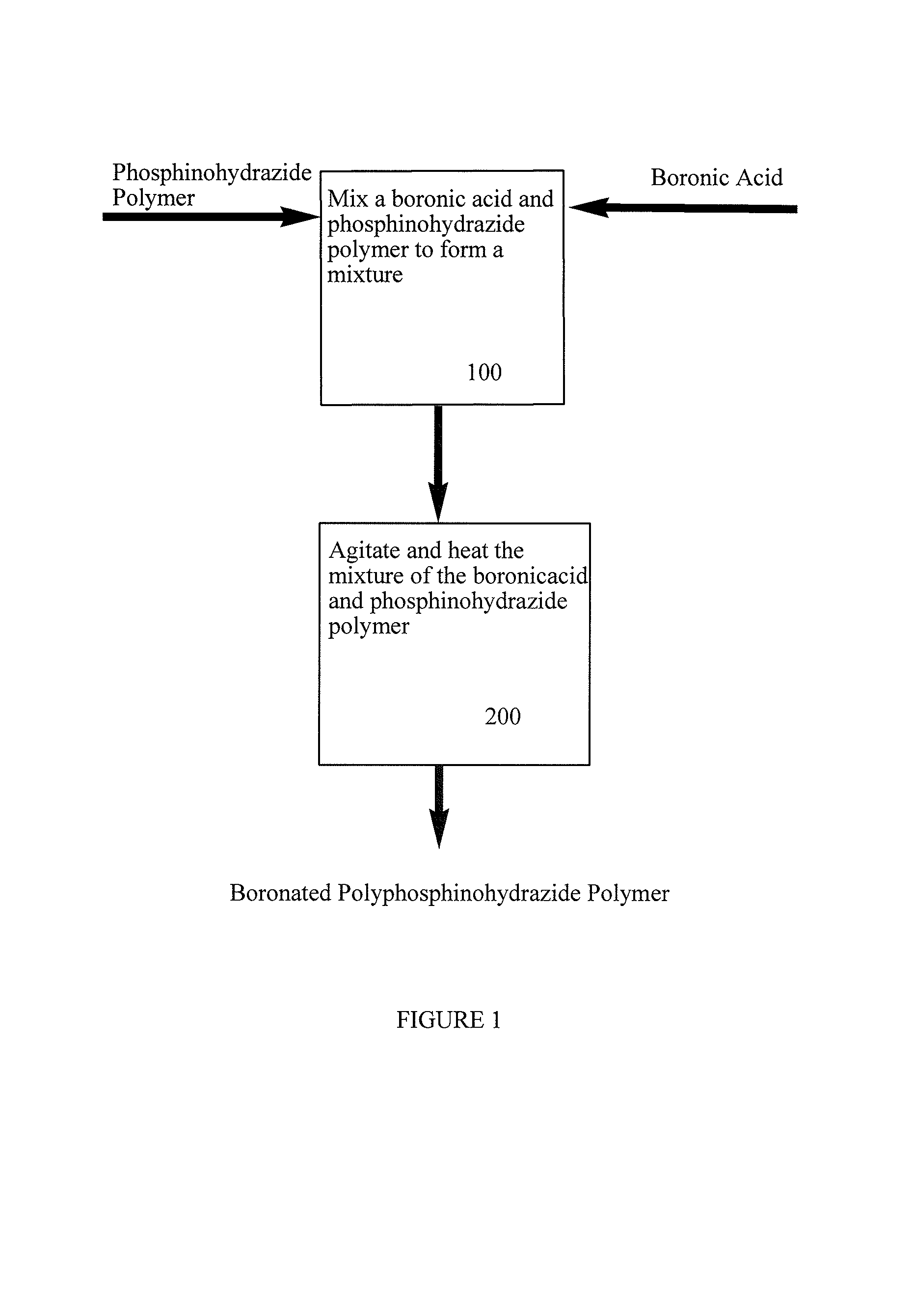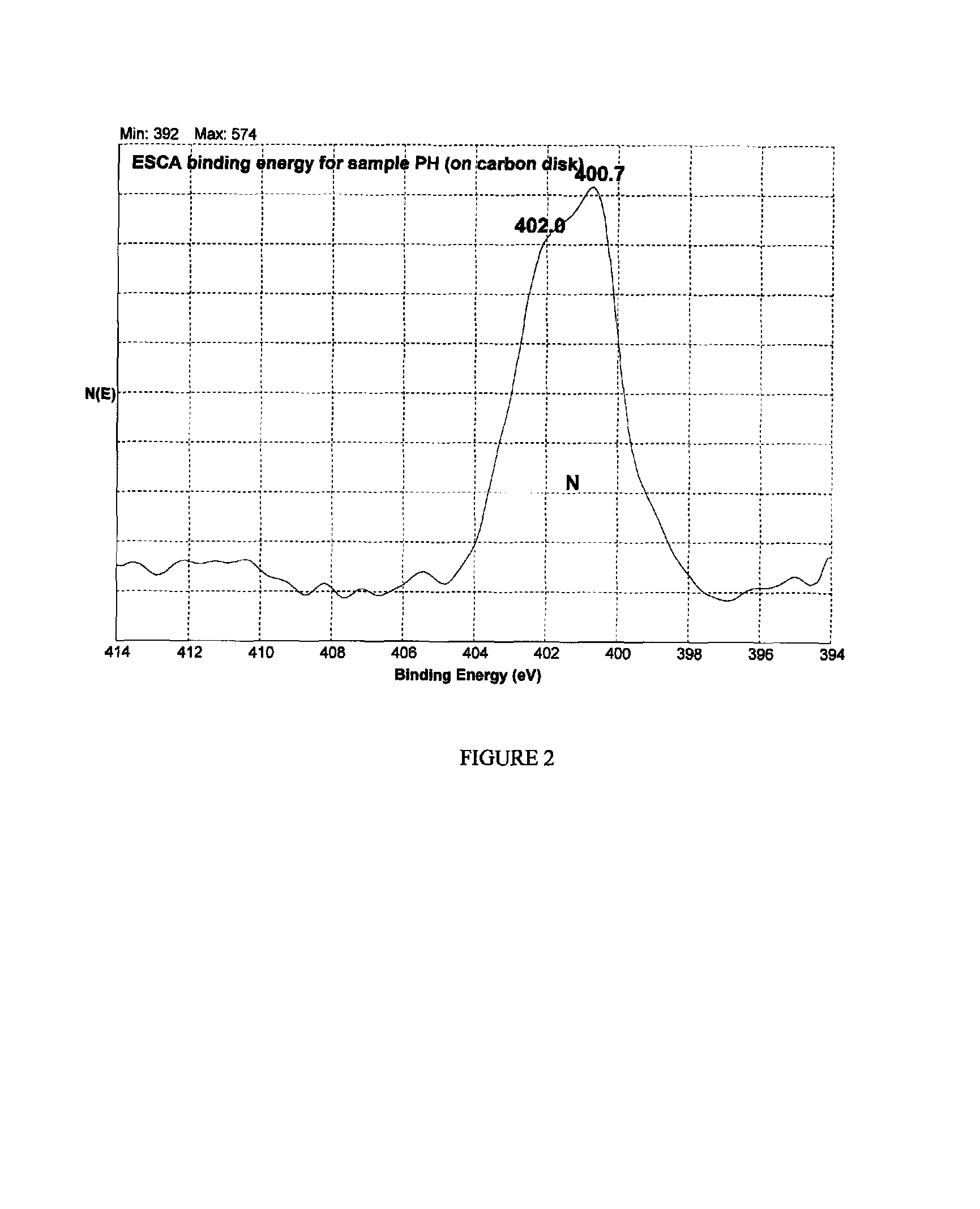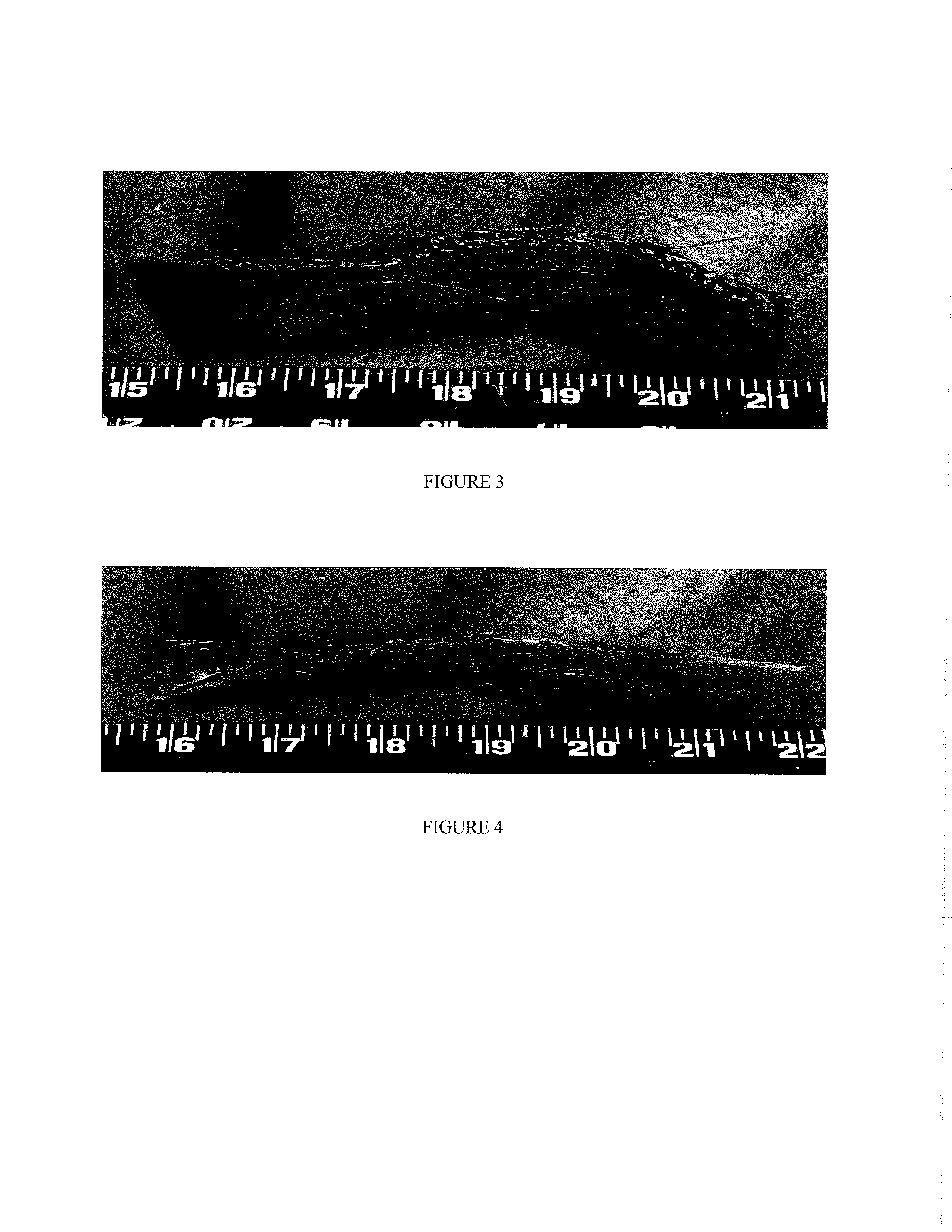Boronated polyphosphinohydrazide fire retardant
a polyphosphinohydrazide and fire retardant technology, applied in the direction of hydrozide preparation, group 3/13 element organic compounds, group 5/15 element organic compounds, etc., can solve the problems of affecting the combustion reaction, the use of “flame retardant” is being phased out, and the term “flame retardant” becomes moot, so as to eliminate or mitigate the effect of leaching out over tim
- Summary
- Abstract
- Description
- Claims
- Application Information
AI Technical Summary
Benefits of technology
Problems solved by technology
Method used
Image
Examples
examples
[0044]Bronated polyphosphinohydrazide polymers were prepared by heating varying percentages of boric acid with the corresponding phosphinohydrazide, viz., the P-methyl (i.e., R=methyl in Formula 1) and the P-hydrogen (i.e., R=hydrogen in Formula 1), to obtain the product used as a fire-retardant additive. However, the synthesis of the boronated product starts first with the synthesis of the polymethylphosphinohydrazide (hereinafter “P-M hydrazide”) and the polyhydrophosphinohydrazide (hereinafter “P-H hydrazide”).
Synthesis of Polyphosphinohydrazides
[0045]The first product prepared was polymethylphosphinohydrazide, where R═CH3 in formula (1). Since this reaction does not become exothermic, it was prepared in bulk. Dimethyl methylphosphonate, in the amount of 248 g (2 moles), was placed in a 2-liter resin kettle. It was cooled in a dry ice-ethylene glycol bath and 100 g (2 moles) hydrazine hydrate were slowly added. The mixture was left to stir overnight and then heated to distill off...
PUM
| Property | Measurement | Unit |
|---|---|---|
| Temperature | aaaaa | aaaaa |
| Temperature | aaaaa | aaaaa |
| Percent by mass | aaaaa | aaaaa |
Abstract
Description
Claims
Application Information
 Login to view more
Login to view more - R&D Engineer
- R&D Manager
- IP Professional
- Industry Leading Data Capabilities
- Powerful AI technology
- Patent DNA Extraction
Browse by: Latest US Patents, China's latest patents, Technical Efficacy Thesaurus, Application Domain, Technology Topic.
© 2024 PatSnap. All rights reserved.Legal|Privacy policy|Modern Slavery Act Transparency Statement|Sitemap



